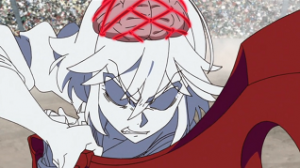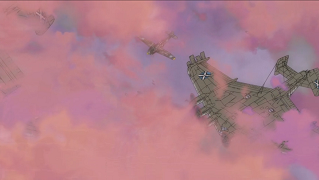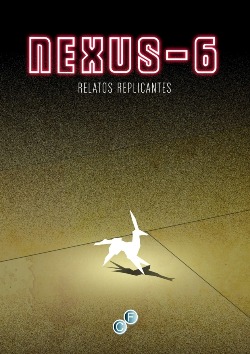 Kill la Kill #18 – For an episode which mainly consisted of fighting, there was an awful lot of information filled in. We now know who Satsuki’s father is, who Ryūko’s mother is, and why Ryūko is the heroine. We got the payoff to Ryūko’s hair ornament (I for one will admit that I didn’t even recognize that as a setup for anything) and Mako’s bag of souvenirs from Osaka.
Kill la Kill #18 – For an episode which mainly consisted of fighting, there was an awful lot of information filled in. We now know who Satsuki’s father is, who Ryūko’s mother is, and why Ryūko is the heroine. We got the payoff to Ryūko’s hair ornament (I for one will admit that I didn’t even recognize that as a setup for anything) and Mako’s bag of souvenirs from Osaka.
And confirmation that Ragyō is the final boss. Well, Ragyō plus Junketsu. With Nui as the chief henchman, who thus gets to fight the next highest tier of good guys (?) in the Elite Four.
 Samurai Flamenco #17 – It doesn’t deep analysis to pick up on the metaphors here, does it? The leader whose strength depends on his poll numbers, but is undone by the Internet journalist… yep. And being that this is Japan, the calligraphy brush and ink are the tools of the very old-line press. And the divine wind? Oh yes, the original kamikaze are the storms that twice arrived at just the right time to stop invasion fleets from China, keeping Japan from becoming part of Kublai Khan’s empire.
Samurai Flamenco #17 – It doesn’t deep analysis to pick up on the metaphors here, does it? The leader whose strength depends on his poll numbers, but is undone by the Internet journalist… yep. And being that this is Japan, the calligraphy brush and ink are the tools of the very old-line press. And the divine wind? Oh yes, the original kamikaze are the storms that twice arrived at just the right time to stop invasion fleets from China, keeping Japan from becoming part of Kublai Khan’s empire.
Goto has finally made the choice to fight for justice over the letter of the law. Nice to see him getting in on the action at last.
Next, actual aliens at last! Unless it’s another conspiracy. Boy, watching this show has made me paranoid.

Nobunagun #7 – Admiral William Halsey was the commander of the US Third Fleet for much of World War II. It was his ships that attacked Japan itself, and the USS Missouri was his flagship when the Japanese surrender was formalized there. You can see, then, how it’s his namesake that just happens to be the ship to be made an example of by the resurrected Musashi.
John C. Stennis was a senator from Mississippi who sat on the Armed Services Committee from 1969 to 1980 and through his work there became known as the father of the modern US Navy. His aircraft carrier would definitely be one of the coolest possible ones for Shio to be operating from.
As for the Musashi itself, here we have another hint about EIOs being able to interact with human brains. I’m not sure whether the story is implying that the EIOs have been lurking in the ocean since at least 1944, or that they can pick up the psychic traces of long-dead sailors– which would give them a striking similarity to the AU ball technology. I wonder what’s really hiding under that rabbit suit at the center of DOGOO?
 The Pilot’s Love Song #7 – A little while ago, an expeditionary force from Balsteros went far off across the ocean to the Holy Spring and annoyed the “barbarians” living near it. Now the barbarians are stirred up and ready to attack Isla in force. And it turns out they have way better technology than anyone planned for. And the only thing that may be able to keep the people of this lone island from being destroyed in revenge is the reappearance of the divine wind.
The Pilot’s Love Song #7 – A little while ago, an expeditionary force from Balsteros went far off across the ocean to the Holy Spring and annoyed the “barbarians” living near it. Now the barbarians are stirred up and ready to attack Isla in force. And it turns out they have way better technology than anyone planned for. And the only thing that may be able to keep the people of this lone island from being destroyed in revenge is the reappearance of the divine wind.
Sounding familiar yet? My in-house aviation expert says that there’s one part of the analogy that doesn’t quite fit, which is that the newer and spiffier barbarian fighters are mainstays of the German WWII air force, the Stuka and ME-109.
Given all the unanswered questions represented by the Holy Spring and the barbarians, that was an awful lot of episode time to waste on a death that was already being telegraphed last week. It feels like the source material is being stretched awfully thin to fill a whole season.
 Hozuki no Reitetsu #6 – Back to introducing what looks like more recurring characters means back to a kind of meh episode. Although I will grant that that was a really epic photobomb.
Hozuki no Reitetsu #6 – Back to introducing what looks like more recurring characters means back to a kind of meh episode. Although I will grant that that was a really epic photobomb.
The author has certainly been doing her research. Occult demonology in more recent centuries does mostly place Beelzebub as the highest underling of Lucifer, though rendering him as a fastidious, tea-sipping bureaucrat with an appreciation for long skirts is a new twist.









